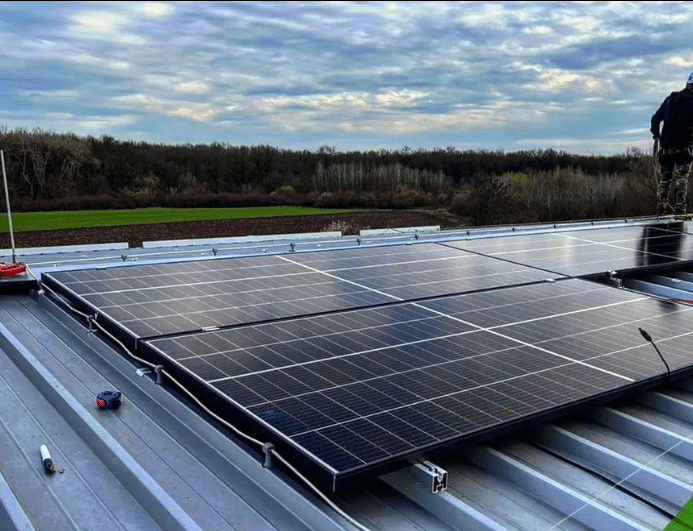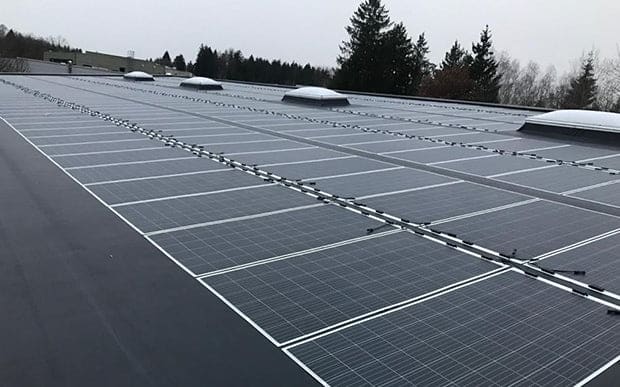Table of Contents
A country’s solar panel rooftop potential refers to the number of roofs suitable for solar power generation, depending on size, shading, orientation, and location. Rooftop potential does not equate to the economic or market potential of rooftop solar panels – it does not take into account availability or cost. Rather, it is the cap for rooftop solar deployment nationwide.
The solar roof potential of an individual roof refers to the amount of solar energy that can be installed on that roof based on its size, shading, pitch, location, and structure. Satellite maps, irradiance data, equipment specifications, and other factors inform the bids installers provide to customers to help them understand the potential costs and benefits of rooftop solar panels.
Most of our customers install PV modules on rooftops to generate electricity rather than building integrated or ground-mounted solar systems. The benefit of rooftop solar panels is that they make the most of otherwise unoccupied space while keeping the array safely out of reach and away from the most common shade. We’ll look at the different types of photovoltaics you can choose from based on your roof type.
What is a Solar panel rooftop?
A rooftop solar power system, also known as a rooftop solar panel system, is a photovoltaic (PV) system that generates electricity from solar panels installed on the roof of a building, residential or commercial building. A solar power generation system consists of photovoltaic modules, installation systems, cables, solar inverters, and other electrical accessories. Rooftop solar systems are typically smaller compared to ground-mounted solar plants. Most rooftop PV plants are grid-connected PV systems. Photovoltaic systems on residential buildings typically have capacities between 5 and 20 kilowatts (kW), while photovoltaic systems on commercial buildings typically have capacities between 100 kilowatts and 1 megawatt (MW).
There are three types of solar system installations: on-grid, off-grid, and hybrid. Grid-tied installations are the most common type, where solar modules are connected to the public grid. The main benefit of having this type of installation is that you get net metering, which will refund your electricity bill with any excess solar power generated.
Off-grid units are self-contained and not connected to the public grid. This means you need to store the energy from your solar panels in a battery and use it when needed. A hybrid system is a combination of the battery storage capacity of a grid-tied system and an off-grid system.

Different types of solar panels are selected based on roof type?
pitched roof
There are three ways to install solar energy on a tile roof:
Mount conventional rigid solar panels or select flexible solar panels to the roof using roof mounting brackets located above the tiles;
Remove the tiles from the area where the panels will be located and install the rigid solar panels directly to the battens and rafters using roof mounting brackets;
Install solar tiles directly on the roof. Most people will install a system on an existing home (a “retrofit”) and choose to mount the panels to the roof using mounting brackets.
For new or refurbishment of roofs, or where there may be planning issues (such as conservation areas), a roof-mounted system or solar roof tiles may be the preferred solution.
Roof: Integrated complete roof
Solar panel Rooftop systems use the same solar panels as rooftop systems. The only difference is that the modules are mounted on laths/rafters rather than tiles (usually with a metal pallet backing between the panels and rafters). The roofer will then lay tiles over the panels, often using lead flashing to create a tight seal around the panels.
Generally speaking, it is not recommended to install a roofing system on an existing roof for the following reasons:
Customers often assume that the top of the rigid solar panel will be flush with the tile. This is not the case – usually, the tiles are only a few centimeters thick, while the brackets and panels are 11 centimeters from the rafters. Therefore, unless the rafters around the PV system are intentionally constructed (as is the case with new roofs), the tiles will not be flush with the roof.
The performance of this system will be reduced by approximately 3% relative to a rooftop system because to operate more efficiently, gaps are required behind the solar modules for ventilation. Rooftop systems do not provide this ventilation, so the performance of the system will suffer.
To create a watertight seal between the system and surrounding tiles, lead flashing is often required. This is often ugly and defeats the purpose of using a roof system, which is usually to create an unobtrusive system that blends in with the rest of the roof.
solar tiles
If you want your system to sit flush with surrounding tiles and blend seamlessly into your roof, you may prefer to use solar panel roof tiles. These systems are much more expensive than rooftop or in-roof systems. Of course, Sungold has also designed similar solar tile lightweight solar panels, using new composite materials and back sheet materials, which are more suitable for installation on roofs. The main designs are currently focused on 135w-200w. in between; but if you’re particularly worried about aesthetics, this might be the better choice
flat roof solar
In some ways, flat roofs provide an easier starting point for installing solar systems than pitched roofs, but they also come with their considerations:
Requirements for planning permission for residential properties.
Flat roof systems take up more space per kilowatt than pitched roof systems.
Flat roof solar mounting frames are typically not anchored to the roof itself, so ballast must be used to reduce weight. The roof structure needs to be able to support the ballast.
If the system is fixed to the roof, it is important to check the impact on the roof warranty and ensure watertightness is maintained.
Optimal installation angle and direction.
Lightweight solar panel rooftop?
Not all roofs can support the weight of glass PV modules. Others have curves and shapes that don’t lend themselves to uniform, bulky panels. Flexible modules have long been proposed as a solution, but the key to unlocking this potential has proven elusive.
The versatility of the TF series module lies in its abandonment of glass in favor of crystalline silicon solar cells, which can be applied to a variety of substrates with thicknesses as low as 2 mm. The panels come in standard configurations—60 to 100 cells per sheet—but can also be shaped to suit specific applications. Depending on the design, number of cells, and substrate and frame options, a solar panel with similar output could weigh 20 kilograms (44 pounds) or more compared to traditional glass solar panels.
“This solar technology created by Sungold is an innovative and versatile alternative that can help integrate solar energy into more buildings, making solar energy a key part of the construction process and allowing solar energy to be installed on curved or heritage buildings,

Key point
Versatility: One of the advantages of rooftop flexible solar panels is their versatility. The flexibility of these panels allows them to be installed on different types of roofs, including curved surfaces. This is great for buildings with non-traditional roof designs or structures.
Efficiency: In terms of efficiency, flexible solar panels are designed to convert sunlight into electricity. While they may not be as efficient as traditional rigid solar panels, they still have decent power output. Exact efficiency may vary by specific model and brand.
Lightweight: Another advantage is the lightweight nature of flexible solar panels. These panels are lighter and easier to handle and install than traditional solar panels. This is especially beneficial for installations on rooftops that may not be able to support the weight of heavier solar panels.
It’s worth noting that flexible solar panels are generally more expensive than rigid solar panels. However, the convenience and flexibility they offer can justify the cost.
Final thoughts
Overall, rooftop flexible solar panels such as the Sungold Roof Flex are a practical and convenient option for those looking to harness solar power on unconventional roof surfaces. Their flexibility, lightweight design, and good power output make them a viable option for a variety of residential and commercial applications.

























